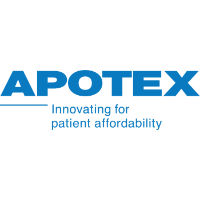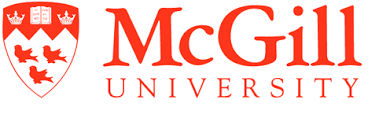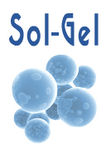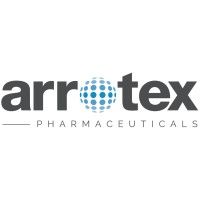预约演示
更新于:2025-09-09

Apotex, Inc.
更新于:2025-09-09
概览
标签
其他疾病
眼部疾病
血液及淋巴系统疾病
小分子化药
生物类似药
Fc融合蛋白
疾病领域得分
一眼洞穿机构专注的疾病领域
暂无数据
技术平台
公司药物应用最多的技术
暂无数据
靶点
公司最常开发的靶点
暂无数据
| 排名前五的药物类型 | 数量 |
|---|---|
| 小分子化药 | 23 |
| 生物类似药 | 7 |
| 集落刺激因子 | 3 |
| 单克隆抗体 | 3 |
| 非降解型分子胶 | 1 |
关联
32
项与 Apotex, Inc. 相关的药物作用机制 RARα激动剂 [+2] |
在研适应症 |
非在研适应症- |
最高研发阶段批准上市 |
首次获批国家/地区 美国 |
首次获批日期2021-07-26 |
靶点 |
作用机制 PD-1抑制剂 |
在研机构 |
原研机构 |
最高研发阶段批准上市 |
首次获批国家/地区 中国 |
首次获批日期2018-12-17 |
靶点 |
作用机制 DNA抑制剂 [+1] |
原研机构 |
非在研适应症 |
最高研发阶段批准上市 |
首次获批国家/地区 美国 |
首次获批日期2016-03-10 |
85
项与 Apotex, Inc. 相关的临床试验CTRI/2022/06/043537
A Randomized, Open-Label, Two-Way Crossover, Multiple-Dose, Comparative Bioavailability Study of Aripiprazole Extended-Release Injectable Suspension (400 mg) (Apotex Inc.) Versus Abilify Maintena® (Aripiprazole) Extended-Release Injectable Suspension (400 mg) (Otsuka America Pharmaceutical, Inc.) (USA) in Patients with Schizophrenia.
开始日期2022-06-30 |
申办/合作机构 |
NCT04840823
A Randomized, Double-blind, Parallel Group, Single Centre, Phase 1b/2 Study to Assess the Safety, Tolerability, Pharmacokinetics and Pharmacodynamics of Three Orally Administered Doses of Enoxacin (200mg Twice Daily, 400mg Twice Daily and 600mg Twice Daily) in Adults With Amyotrophic Lateral Sclerosis
The study will assess the safety of the drug enoxacin at specific dose levels in adults with ALS.
开始日期2021-03-26 |
申办/合作机构  McGill University McGill University [+2] |
NCT04330690
A Multi-centre, Adaptive, Randomized, Open-label, Controlled Clinical Trial of the Safety and Efficacy of Investigational Therapeutics for the Treatment of COVID-19 in Hospitalized Patients (CATCO: Canadian Treatments for COVID-19), in Conjunction With the Public Health Emergency SOLIDARITY Trial (World Health Organization)
This study is an adaptive, randomized, open-label, controlled clinical trial, in collaboration with countries around the world through the World Health Organization.
开始日期2020-03-18 |
申办/合作机构 |
100 项与 Apotex, Inc. 相关的临床结果
登录后查看更多信息
0 项与 Apotex, Inc. 相关的专利(医药)
登录后查看更多信息
50
项与 Apotex, Inc. 相关的文献(医药)2023-11-01·European journal of pharmaceutical sciences : official journal of the European Federation for Pharmaceutical Sciences
The Global Bioequivalence Harmonisation Initiative (GBHI): Report of the fifth international EUFEPS/AAPS conference
Review
作者: Wedemeyer, R ; Welink, J ; Tsang, Y-C ; Mehta, M ; Tampal, N ; Paixao, P ; Jiang, W ; Walstab, J ; Koenig, J ; Beuerle, G ; Schug, B ; Blume, H H
The series of conferences of the Global Bioequivalence Harmonisation Initiative (GBHI) was started in 2015 by the European Federation for Pharmaceutical Sciences (EUFEPS). All GBHI meetings so far were co-organised together with the American Association of Pharmaceutical Scientists (AAPS). Beginning with the 3rd workshop US-FDA joined as co-sponsor - to support global harmonisation of regulatory recommendations for bioequivalence (BE) assessment. At the 5th GBHI conference, the following BE topics were intensively discussed, and the following main conclusions were drawn: (1) Statistical considerations for BE assessment in specific situations covering scaling approaches for highly variable drug (HVD) products, two-stage adaptive design and opportunities of modelling and simulation to support BE: even though special BE study concepts like adaptive designs are not often used in practise so far, a majority of the workshop participants were in favour of a more frequent application of such approaches. The regulatory conditions relevant in this context need further concretisation and harmonisation between the regions. Moreover, modelling and simulation were considered as a promising and evolving approach, also for BE development programmes. (2) Fed versus fasting conditions in BE trials: Findings that BE between generic products could be confirmed only after fasted administration but failed under fed conditions seem more an exception than the rule. Obviously, BCS class IV compounds are most problematic in this context. Differences in critical excipients such as surfactants or pH-modifiers may be relevant reasons for different sensitivity for interactions in fasted versus fed conditions. Consequently, such deviations in composition of generic preparations should be avoided. Moreover, confirmation of BE may be generally difficult comparing different dosage forms, such like capsules versus tablets, especially in fed state. (3) BE assessment of locally acting drug products applied topically to the skin: Appropriateness and potential benefit of in-vitro tests as alternatives to clinical efficacy studies have been comprehensively discussed. In addition to the already well-established in-vitro release and permeation tests, other techniques were suggested, e.g., Raman spectroscopy or dermal open flow microperfusion. Validation of those methods is challenging and, despite significant progress already achieved during previous years, more research is needed before they may be fully accepted for regulatory purposes. (4) BE evaluation of narrow therapeutic index (NTI) drugs: The discrepancies amongst regulatory agencies in necessity of tighter BE acceptance ranges, the recommendations for inclusion of peak and total drug exposure into BE assessment with more restrictive criteria and the importance of comparison of the product-related within-subject variability for NTI drugs were debated. Arguments in favour and against the different approaches were presented and discussed but need further consideration before harmonisation can be achieved. The highly interactive meeting and extensive exchange between regulators and scientists from industry and academia resulted in useful progress in open BE issues and supported the goal of science-driven harmonisation.
2023-07-01·Journal of pharmaceutical sciences
Drug Permeability - Best Practices for Biopharmaceutics Classification System (BCS)-Based Biowaivers: A workshop Summary Report
Article
作者: Gonzalez, P ; Velagapudi, R ; Mehta, M ; Vaidyanathan, J ; Almeida, S ; Gordon, J ; Kristan, K ; Munshi, U ; Berginc, K ; Tsang, Y C ; Dressman, J B ; Cook, J ; Mandula, H ; Polli, J E ; Painter, D ; Veerasingham, S ; Seo, P ; Shanker, R ; Bhoopathy, S ; Welink, J ; Volpe, D A
The workshop "Drug Permeability - Best Practices for Biopharmaceutics Classification System (BCS) Based Biowaivers" was held virtually on December 6, 2021, organized by the University of Maryland Center of Excellence in Regulatory Science and Innovation (M-CERSI), and the Food and Drug Administration (FDA). The workshop focused on the industrial, academic, and regulatory experiences in generating and evaluating permeability data, with the aim to further facilitate implementation of the BCS and efficient development of high-quality drug products globally. As the first international permeability workshop since the BCS based biowaivers was finalized as the ICH M9 guideline, the workshop included lectures, panel discussions, and breakout sessions. Lecture and panel discussion topics covered case studies at IND, NDA, and ANDA stages, typical deficiencies relating to permeability assessment supporting BCS biowaiver, types of evidence that are available to demonstrate high permeability, method suitability of a permeability assay, impact of excipients, importance of global acceptance of permeability methods, opportunities to expand the use of biowaivers (e.g. non-Caco-2 cell lines, totality-of-evidence approach to demonstrate high permeability) and future of permeability testing. Breakout sessions focused on 1) in vitro and in silico intestinal permeability methods; 2) potential excipient effects on permeability and; 3) use of label and literature data to designate permeability class.
2022-03-01·Annals of hematology3区 · 医学
The pharmacokinetic and safety profile of single-dose deferiprone in subjects with sickle cell disease
3区 · 医学
Article
作者: Soulières, Denis ; Rozova, Anna ; Fradette, Caroline ; Tricta, Fernando ; Tsang, Yu Chung ; Mercier-Ross, Jules
Abstract
Patients with sickle cell disease (SCD) who undergo repeated blood transfusions often develop iron overload. Deferiprone (Ferriprox®) is an oral iron chelator indicated for the treatment of transfusional iron overload due to thalassemia syndromes and has been recently approved as a treatment for iron overload in adult and pediatric patients with SCD and other anemias. The present study aims to characterize the pharmacokinetic (PK) profile of deferiprone (DFP) in adult subjects with SCD. In this phase I, open-label study, subjects with SCD were administered a single 1500 mg dose of DFP. Blood and urine samples were collected for PK assessments of DFP and its main metabolite, deferiprone 3-O-glucuronide (DFP-G). Eight subjects were enrolled and completed the study. Following drug administration, serum levels of DFP and DFP-G rose to maximum concentrations at 1.0 and 2.8 h post-dose, respectively. The half-lives of DFP and DFP-G were 1.5 and 1.6 h, respectively. The majority of administered drug was metabolized and excreted as DFP-G, with less than 4% excreted unchanged in urine up to 10 h post-dose. Subjects received a safety assessment 7 (± 3) days post-dose. Two subjects reported mild adverse events unrelated to the study drug, and no other safety concerns were reported. The PK profile of DFP in SCD subjects is consistent with previous reports in healthy adult volunteers, suggesting no special dosing adjustments are indicated for this population. These findings provide valuable insight for treating iron overload in patients with SCD, who have limited chelation therapy treatment options (trial registration number: NCT01835496, date of registration: April 19, 2013).
216
项与 Apotex, Inc. 相关的新闻(医药)2025-09-04
NESS ZIONA, Israel, Sept. 04, 2025 (GLOBE NEWSWIRE) -- Sol-Gel Technologies, Ltd. (NASDAQ: SLGL), a dermatology company, pioneering treatments for patients with severe skin conditions, conducting a Phase-3 clinical trial of SGT-610 (patidegib gel, 2%) for Gorlin syndrome, a Phase-1b, double blinded clinical trial of SGT-210 (erlotinib ointment, 5%) on Darier disease patients and with two approved large-category dermatology products, TWYNEO and EPSOLAY, announced today that on August 27, 2025 Health Canada issued a Notice of Compliance (NOC) for EPSOLAY for the treatment of inflammatory lesions of rosacea in adults.
This approval comes as a result of Sol-Gel’s partnership with Searchlight Pharma, Sol-Gel’s exclusive licensee for commercializing EPSOLAY in the Canadian market. Under the exclusive license agreement signed in 2023, Searchlight was responsible for obtaining Canadian regulatory approval for EPSOLAY, and with this milestone achieved, Searchlight is preparing to launch EPSOLAY for rosacea patients in Canada. As part of the agreement, Sol-Gel is eligible to receive up to $11 million in combined potential upfront, regulatory and sales milestone payments for TWYNEO and EPSOLAY in Canada, in addition to tiered royalties on net sales. This non-dilutive revenue, alongside other partnerships, strengthens Sol-Gel’s balance sheet and supports the Company’s growth strategy.
Mr. Mori Arkin, Executive Chairman of Sol-Gel, stated: "We are delighted that Health Canada has approved EPSOLAY, enabling us to bring this innovative treatment to rosacea patients in Canada. The recently announced U.S. transaction with Mayne Pharma and agreements executed during the past year, underscore our ability to unlock value from our assets while strengthening our financial position. We look forward to supporting Searchlight Pharma in the Canadian launch of EPSOLAY and to advancing our pipeline of novel dermatological therapies."
Mr. Arkin further commented: "Health Canada's approval of EPSOLAY brings the company a step closer towards achieving its strategy to commercialize EPSOLAY and TWYNEO throughout the world, across ex-U.S. territories, including Europe, Asia, Africa, Latin America, and Australia, where most partnership agreements are already in place. Based on current plans, launches in many of these territories are expected to begin in 2027 and 2028, and partners forecasts indicate that ex-U.S. contribution to the EBITDA of the company are expected to gradually increase and potentially reach approximately $10 million annually by 2031. These figures do not include milestone payments which, if materialized, would provide additional important non-dilutive income to support the implementation of our strategy of becoming a leader in dermatological rare diseases." Lastly, Mr. Arkin added: "As acne and rosacea are no longer a core business for the company, we expect that at the right time when the commercial potential of our ex-U.S. TWYNEO and EPSOLAY will become more visible, we will look to seek strategic alternatives for this business."
About TWYNEO and EPSOLAY
TWYNEO is a topical cream containing a fixed-dose combination of tretinoin, 0.1%, and benzoyl peroxide, 3%, cream for the treatment of acne vulgaris in adults and pediatric patients 9 years of age and older. TWYNEO is the first acne treatment that contains a fixed-dose combination of benzoyl peroxide and tretinoin. Tretinoin and benzoyl peroxide are widely prescribed separately for acne vulgaris; however, benzoyl peroxide causes degradation of the tretinoin molecule, thereby potentially reducing its effectiveness if used at the same time or combined in the same formulation. TWYNEO uses silica (silicon dioxide) core shell structures to separately micro-encapsulate tretinoin crystals and benzoyl peroxide crystals enabling inclusion of the two active ingredients in the cream.
EPSOLAY is a topical cream containing benzoyl peroxide (BPO), 5%, for the treatment of bumps and blemishes (inflammatory lesions) of rosacea in adults. EPSOLAY utilizes a proprietary, patented technology to encapsulate BPO within silica-based microcapsules to create a barrier between the medication and the skin. The silica-based shell is designed to slowly release BPO over time to provide a tolerable and effective treatment.
About Gorlin Syndrome and SGT-610
SGT-610, a hedgehog signaling pathway blocker, has the potential to be the first ever treatment for prevention of BCCs in Gorlin syndrome patients, if approved. Gorlin syndrome, an autosomal dominant genetic disorder affecting approximately 1 in 27,000-31,000 people in the U.S., is mostly caused by inheritance of one defective copy of the tumor suppressor patched homolog 1 (PTCH1) gene. Normally, the PTCH1 gene blocks the smoothened, frizzle class receptor (SMO) gene, turning off the hedgehog signaling pathway when it is not needed. Mutations in the PTCH1 gene may cause a loss of PTCH1 function, release of SMO, and may allow BCC tumor cells to divide uncontrollably. Patidegib, the active substance in SGT-610, is designed to block the SMO signal, thus, allowing cells to function normally and reducing the production of new tumors.
About Sol-Gel Technologies
Sol-Gel Technologies, Ltd. is a dermatology company focused on identifying, developing and commercializing or partnering drug products to treat skin diseases. Sol-Gel developed TWYNEO which is approved by the FDA for the treatment of acne vulgaris in adults and pediatric patients nine years of age and older; and EPSOLAY, which is approved by the FDA for the treatment of inflammatory lesions of rosacea in adults.
The Company’s pipeline also includes Phase 3 clinical trial of Orphan and breakthrough drug candidate SGT-610, which is a new topical hedgehog inhibitor being developed to prevent the new basal cell carcinoma lesions in patients with Gorlin syndrome that is expected to have an improved safety profile compared to oral hedgehog inhibitors as well as topical drug candidate SGT-210 under investigation for the treatment of rare hyperkeratinization disorders.
For additional information, please visit our new website: www.sol-gel.com
Forward Looking Statements
This press release contains “forward-looking statements” within the meaning of the Private Securities Litigation Reform Act of 1995. All statements contained in this press release that do not relate to matters of historical fact should be considered forward-looking statements, including, but not limited to the amounts expected to be received under our current and future licensing agreements and other collaborations, the timing of the launch of TWYNEO and EPSOLAY in various countries and future strategic alternatives for the company’s businesses. In some cases, you can identify forward-looking statements by terminology such as “believe,” “may,” “estimate,” “continue,” “anticipate,” “intend,” “should,” “plan,” “expect,” “predict,” “potential,” or the negative of these terms or other similar expressions. Forward-looking statements are based on information we have when those statements are made or our management’s current expectations and are subject to risks and uncertainties that could cause actual performance or results to differ materially from those expressed in or suggested by the forward-looking statements. Important factors that could cause such differences include, but are not limited to, the risk that the amounts received from our current and future licensing agreements and other collaborations will not be as anticipated, the risk of delay of the launch of TWYNEO and EPSOLAY in various countries, the risk of any change in the Company’s strategic view of the acne and rosacea business, our ability to enter into further collaborations a delay in the timing of our clinical trials, top-line results and regulatory filings, a delay in receipt of payments from Mayne Pharma and others, the success of our clinical trials, and an increase in our anticipated costs and expenses, as well as the following factors: (i) the adequacy of our financial and other resources, particularly in light of our history of recurring losses and the uncertainty regarding the adequacy of our liquidity to pursue our complete business objectives; (ii) our ability to complete the development of our product candidates; (iii) our ability to find suitable co-development partners; (iv) our ability to obtain and maintain regulatory approvals for our product candidates in our target markets, the potential delay in receiving such regulatory approvals and the possibility of adverse regulatory or legal actions relating to our product candidates even if regulatory approval is obtained; (v) our collaborators’ ability to commercialize our pharmaceutical product candidates; (vi) our ability to obtain and maintain adequate protection of our intellectual property; (vii) our collaborators’ ability to manufacture our product candidates in commercial quantities, at an adequate quality or at an acceptable cost; (viii) our collaborators’ ability to establish adequate sales, marketing and distribution channels; (ix) acceptance of our product candidates by healthcare professionals and patients; (x) the possibility that we may face third-party claims of intellectual property infringement; (xi) the timing and results of clinical trials that we may conduct or that our competitors and others may conduct relating to our or their products; (xii) intense competition in our industry, with competitors having substantially greater financial, technological, research and development, regulatory and clinical, manufacturing, marketing and sales, distribution and personnel resources than we do; (xiii) potential product liability claims; (xiv) potential adverse federal, state and local government regulation in the United States, China, Europe or Israel; and (xv) loss or retirement of key executives and research scientists; (xvi) general market, political and economic conditions in the countries in which the Company operates; and, (xvii) the current war between Israel and Hamas and any deterioration of the war in Israel into a broader regional conflict involving Israel with other parties. These factors and other important factors discussed in the Company's Annual Report on Form 20-F filed with the Securities and Exchange Commission (“SEC”) on April 29, 2025, and our other reports filed with the SEC, could cause actual results to differ materially from those indicated by the forward-looking statements made in this press release. Except as required by law, we undertake no obligation to update any forward-looking statements in this press release.
Sol-Gel Contact:Eyal Ben-Or Chief Financial Officerinfo@sol-gel.com+972-8-9313429
Source: Sol-Gel Technologies Ltd.
临床3期引进/卖出上市批准临床1期
2025-09-03
NESS ZIONA, Israel, Sept. 04, 2025 (GLOBE NEWSWIRE) -- Sol-Gel Technologies, Ltd. (NASDAQ: SLGL), a dermatology company, pioneering treatments for patients with severe skin conditions, conducting a Phase-3 clinical trial of SGT-610 (patidegib gel, 2%) for Gorlin syndrome, a Phase-1b, double blinded clinical trial of SGT-210 (erlotinib ointment, 5%) on Darier disease patients and with two approved large-category dermatology products, TWYNEO and EPSOLAY, announced today that on August 27, 2025 Health Canada issued a Notice of Compliance (NOC) for EPSOLAY for the treatment of inflammatory lesions of rosacea in adults.
This approval comes as a result of Sol-Gel’s partnership with Searchlight Pharma, Sol-Gel’s exclusive licensee for commercializing EPSOLAY in the Canadian market. Under the exclusive license agreement signed in 2023, Searchlight was responsible for obtaining Canadian regulatory approval for EPSOLAY, and with this milestone achieved, Searchlight is preparing to launch EPSOLAY for rosacea patients in Canada. As part of the agreement, Sol-Gel is eligible to receive up to $11 million in combined potential upfront, regulatory and sales milestone payments for TWYNEO and EPSOLAY in Canada, in addition to tiered royalties on net sales. This non-dilutive revenue, alongside other partnerships, strengthens Sol-Gel’s balance sheet and supports the Company’s growth strategy.
Mr. Mori Arkin, Executive Chairman of Sol-Gel, stated: "We are delighted that Health Canada has approved EPSOLAY, enabling us to bring this innovative treatment to rosacea patients in Canada. The recently announced U.S. transaction with Mayne Pharma and agreements executed during the past year, underscore our ability to unlock value from our assets while strengthening our financial position. We look forward to supporting Searchlight Pharma in the Canadian launch of EPSOLAY and to advancing our pipeline of novel dermatological therapies."
Mr. Arkin further commented: "Health Canada's approval of EPSOLAY brings the company a step closer towards achieving its strategy to commercialize EPSOLAY and TWYNEO throughout the world, across ex-U.S. territories, including Europe, Asia, Africa, Latin America, and Australia, where most partnership agreements are already in place. Based on current plans, launches in many of these territories are expected to begin in 2027 and 2028, and partners forecasts indicate that ex-U.S. contribution to the EBITDA of the company are expected to gradually increase and potentially reach approximately $10 million annually by 2031. These figures do not include milestone payments which, if materialized, would provide additional important non-dilutive income to support the implementation of our strategy of becoming a leader in dermatological rare diseases."
Lastly, Mr. Arkin added: "As acne and rosacea are no longer a core business for the company, we expect that at the right time when the commercial potential of our ex-U.S. TWYNEO and EPSOLAY will become more visible, we will look to seek strategic alternatives for this business."
About TWYNEO and EPSOLAY
TWYNEO is a topical cream containing a fixed-dose combination of tretinoin, 0.1%, and benzoyl peroxide, 3%, cream for the treatment of acne vulgaris in adults and pediatric patients 9 years of age and older. TWYNEO is the first acne treatment that contains a fixed-dose combination of benzoyl peroxide and tretinoin. Tretinoin and benzoyl peroxide are widely prescribed separately for acne vulgaris; however, benzoyl peroxide causes degradation of the tretinoin molecule, thereby potentially reducing its effectiveness if used at the same time or combined in the same formulation. TWYNEO uses silica (silicon dioxide) core shell structures to separately micro-encapsulate tretinoin crystals and benzoyl peroxide crystals enabling inclusion of the two active ingredients in the cream.
EPSOLAY is a topical cream containing benzoyl peroxide (BPO), 5%, for the treatment of bumps and blemishes (inflammatory lesions) of rosacea in adults. EPSOLAY utilizes a proprietary, patented technology to encapsulate BPO within silica-based microcapsules to create a barrier between the medication and the skin. The silica-based shell is designed to slowly release BPO over time to provide a tolerable and effective treatment.
About Gorlin Syndrome and SGT-610
SGT-610, a hedgehog signaling pathway blocker, has the potential to be the first ever treatment for prevention of BCCs in Gorlin syndrome patients, if approved. Gorlin syndrome, an autosomal dominant genetic disorder affecting approximately 1 in 27,000-31,000 people in the U.S., is mostly caused by inheritance of one defective copy of the tumor suppressor patched homolog 1 (PTCH1) gene. Normally, the PTCH1 gene blocks the smoothened, frizzle class receptor (SMO) gene, turning off the hedgehog signaling pathway when it is not needed. Mutations in the PTCH1 gene may cause a loss of PTCH1 function, release of SMO, and may allow BCC tumor cells to divide uncontrollably. Patidegib, the active substance in SGT-610, is designed to block the SMO signal, thus, allowing cells to function normally and reducing the production of new tumors.
About Sol-Gel Technologies
Sol-Gel Technologies, Ltd. is a dermatology company focused on identifying, developing and commercializing or partnering drug products to treat skin diseases. Sol-Gel developed TWYNEO which is approved by the FDA for the treatment of acne vulgaris in adults and pediatric patients nine years of age and older; and EPSOLAY, which is approved by the FDA for the treatment of inflammatory lesions of rosacea in adults.
The Company’s pipeline also includes Phase 3 clinical trial of Orphan and breakthrough drug candidate SGT-610, which is a new topical hedgehog inhibitor being developed to prevent the new basal cell carcinoma lesions in patients with Gorlin syndrome that is expected to have an improved safety profile compared to oral hedgehog inhibitors as well as topical drug candidate SGT-210 under investigation for the treatment of rare hyperkeratinization disorders.
For additional information, please visit our new website: www.sol-gel.com
Forward Looking Statements
This press release contains “forward-looking statements” within the meaning of the Private Securities Litigation Reform Act of 1995. All statements contained in this press release that do not relate to matters of historical fact should be considered forward-looking statements, including, but not limited to the amounts expected to be received under our current and future licensing agreements and other collaborations, the timing of the launch of TWYNEO and EPSOLAY in various countries and future strategic alternatives for the company’s businesses. In some cases, you can identify forward-looking statements by terminology such as “believe,” “may,” “estimate,” “continue,” “anticipate,” “intend,” “should,” “plan,” “expect,” “predict,” “potential,” or the negative of these terms or other similar expressions. Forward-looking statements are based on information we have when those statements are made or our management’s current expectations and are subject to risks and uncertainties that could cause actual performance or results to differ materially from those expressed in or suggested by the forward-looking statements. Important factors that could cause such differences include, but are not limited to, the risk that the amounts received from our current and future licensing agreements and other collaborations will not be as anticipated, the risk of delay of the launch of TWYNEO and EPSOLAY in various countries, the risk of any change in the Company’s strategic view of the acne and rosacea business, our ability to enter into further collaborations a delay in the timing of our clinical trials, top-line results and regulatory filings, a delay in receipt of payments from Mayne Pharma and others, the success of our clinical trials, and an increase in our anticipated costs and expenses, as well as the following factors: (i) the adequacy of our financial and other resources, particularly in light of our history of recurring losses and the uncertainty regarding the adequacy of our liquidity to pursue our complete business objectives; (ii) our ability to complete the development of our product candidates; (iii) our ability to find suitable co-development partners; (iv) our ability to obtain and maintain regulatory approvals for our product candidates in our target markets, the potential delay in receiving such regulatory approvals and the possibility of adverse regulatory or legal actions relating to our product candidates even if regulatory approval is obtained; (v) our collaborators’ ability to commercialize our pharmaceutical product candidates; (vi) our ability to obtain and maintain adequate protection of our intellectual property; (vii) our collaborators’ ability to manufacture our product candidates in commercial quantities, at an adequate quality or at an acceptable cost; (viii) our collaborators’ ability to establish adequate sales, marketing and distribution channels; (ix) acceptance of our product candidates by healthcare professionals and patients; (x) the possibility that we may face third-party claims of intellectual property infringement; (xi) the timing and results of clinical trials that we may conduct or that our competitors and others may conduct relating to our or their products; (xii) intense competition in our industry, with competitors having substantially greater financial, technological, research and development, regulatory and clinical, manufacturing, marketing and sales, distribution and personnel resources than we do; (xiii) potential product liability claims; (xiv) potential adverse federal, state and local government regulation in the United States, China, Europe or Israel; and (xv) loss or retirement of key executives and research scientists; (xvi) general market, political and economic conditions in the countries in which the Company operates; and, (xvii) the current war between Israel and Hamas and any deterioration of the war in Israel into a broader regional conflict involving Israel with other parties. These factors and other important factors discussed in the Company's Annual Report on Form 20-F filed with the Securities and Exchange Commission (“SEC”) on April 29, 2025, and our other reports filed with the SEC, could cause actual results to differ materially from those indicated by the forward-looking statements made in this press release. Except as required by law, we undertake no obligation to update any forward-looking statements in this press release.
Sol-Gel Contact: Eyal Ben-Or Chief Financial Officer info@sol-gel.com +972-8-9313429
Source: Sol-Gel Technologies Ltd.
Source: Sol-Gel Technologies Ltd.
临床3期引进/卖出上市批准临床1期
2025-07-25
The $200 million goes to end purchasers and is subject to court approval, Sun disclosed.
Sun Pharmaceutical and its Taro Pharmaceutical subsidiary are washing their hands of another segment of a years-long antitrust debacle with a $200 million settlement.The deal will clear all claims brought against the companies and affiliated parties by end purchasers in the multidistrict generics pricing antitrust litigation that is playing out in a Pennsylvania court. The agreement was made “without admission of any wrongdoing” and is subject to court approval, Sun disclosed in a filing (PDF). The $200 million may be reduced if more than a certain percentage of the total class members involved opt out, the company noted. Sun and Taro previously shelled out $85 million together to address claims made by the direct purchasers class in 2022, with Taro agreeing to pay $67.6 million and Sun offering the remaining $17.4 million in 2022. The next year, Sun forked over $75 million in a separate payout. That settlement was made after a judge denied motions from Sun and Taro, plus other companies attempting to dismiss the claims.Since then, many other generic drugmakers have stepped forward with their own multi-million dollar settlements, including Sandoz and Apotex, while seven companies further admitted to criminal wrongdoing in the matter. Taro, for its part, agreed in 2020 to pay a total of $419 million in exchange for the U.S. Department of Justice waiving prosecution on two criminal conspiracy charges.The multidistrict litigation in Pennsylvania groups together more than 20 separate lawsuits that date back to 2016. Currently, more than 18 generic drugs are at issue in the case, and claims by 40 states were recently added to the scope of the trial as well, according to the court.Generic drugmakers such as Sun and Taro were accused of engaging in a conspiracy that brought up the price of generic drugs starting in 2012. In 2019, when 44 states pointed fingers at 20 companies and several of their executives for what Connecticut Attorney General William Tong called at the time the "largest cartel case in the history of the United States,” Teva was said to be at the center of the conspiracy while others reaped the rewards. The first lawsuit was filed in 2016, which the former Connecticut Attorney General called the “tip of the iceberg” at the time. To this day, other impacted parties are joining the rally with their own complaints against the generic drugmakers.Earlier this month, Southwest Airlines accused dozens of companies of causing “substantial injury” to its business by fixing the price of their generic medicines and causing prices to spike for more than 1,200 products by “illegally allocating” markets and customers in an “industry-wide” conspiracy. Other large employers, such as American Airlines and Target, have also sued the group.

专利侵权
100 项与 Apotex, Inc. 相关的药物交易
登录后查看更多信息
100 项与 Apotex, Inc. 相关的转化医学
登录后查看更多信息
组织架构
使用我们的机构树数据加速您的研究。
登录
或

管线布局
2025年11月02日管线快照
管线布局中药物为当前组织机构及其子机构作为药物机构进行统计,早期临床1期并入临床1期,临床1/2期并入临床2期,临床2/3期并入临床3期
药物发现
3
1
临床前
临床3期
2
6
申请上市
批准上市
20
12
其他
登录后查看更多信息
当前项目
| 药物(靶点) | 适应症 | 全球最高研发状态 |
|---|---|---|
去铁酮 | 铁过剩 更多 | 批准上市 |
盐酸帕罗西汀 ( SERT ) | 抑郁症 更多 | 批准上市 |
阿柏西普生物类似药(SAM CHUN DANG PHARM Co., Ltd.) ( PGF x VEGF-A ) | 近视脉络膜新生血管 更多 | 批准上市 |
莫达非尼 ( DAT ) | 发作性睡病 更多 | 批准上市 |
阿莫达非尼 ( DAT x DRDs ) | 发作性睡病 更多 | 批准上市 |
登录后查看更多信息
药物交易
使用我们的药物交易数据加速您的研究。
登录
或

转化医学
使用我们的转化医学数据加速您的研究。
登录
或

营收
使用 Synapse 探索超过 36 万个组织的财务状况。
登录
或

科研基金(NIH)
访问超过 200 万项资助和基金信息,以提升您的研究之旅。
登录
或

投资
深入了解从初创企业到成熟企业的最新公司投资动态。
登录
或

融资
发掘融资趋势以验证和推进您的投资机会。
登录
或

生物医药百科问答
全新生物医药AI Agent 覆盖科研全链路,让突破性发现快人一步
立即开始免费试用!
智慧芽新药情报库是智慧芽专为生命科学人士构建的基于AI的创新药情报平台,助您全方位提升您的研发与决策效率。
立即开始数据试用!
智慧芽新药库数据也通过智慧芽数据服务平台,以API或者数据包形式对外开放,助您更加充分利用智慧芽新药情报信息。
生物序列数据库
生物药研发创新
免费使用
化学结构数据库
小分子化药研发创新
免费使用




